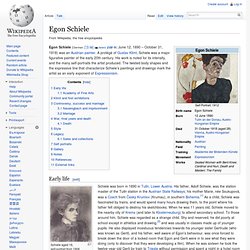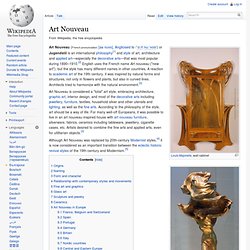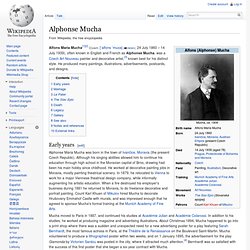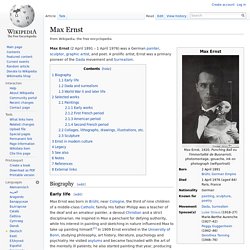

"Calculation" dibujos de Rafael Araujo. Egon Schiele. Egon Schiele (German: [ˈʃiːlə] ( ) ƩEE-lə; June 12, 1890 – October 31, 1918) was an Austrian painter.

A protégé of Gustav Klimt, Schiele was a major figurative painter of the early 20th century. His work is noted for its intensity, and the many self-portraits the artist produced. The twisted body shapes and the expressive line that characterize Schiele's paintings and drawings mark the artist as an early exponent of Expressionism. Jan toorop - Google Search. Malikafavre. Art Nouveau. Art Nouveau is considered a "total" art style, embracing architecture, graphic art, interior design, and most of the decorative arts including jewellery, furniture, textiles, household silver and other utensils and lighting, as well as the fine arts.

According to the philosophy of the style, art should be a way of life. For many well-off Europeans, it was possible to live in an art nouveau-inspired house with art nouveau furniture, silverware, fabrics, ceramics including tableware, jewellery, cigarette cases, etc. Artists desired to combine the fine arts and applied arts, even for utilitarian objects.[3] Origins[edit] Art Nouveau interior at the 1900 Paris Universal Exhibition by Bruno Möhring, German pavilion. Gustav Klimt. Life and work[edit] Early life and education[edit] Gustav Klimt was born in Baumgarten, near Vienna in Austria-Hungary, the second of seven children—three boys and four girls.
His mother, Anna Klimt (née Finster), had an unrealized ambition to be a musical performer. His father, Ernst Klimt the Elder, formerly from Bohemia, was a gold engraver. All three of their sons displayed artistic talent early on. Klimt lived in poverty while attending the Vienna School of Arts and Crafts (Kunstgewerbeschule), where he studied architectural painting until 1883. In 1888 Klimt received the Golden Order of Merit from Emperor Franz Josef I of Austria for his contributions to murals painted in the Burgtheater in Vienna.
During this period Klimt fathered at least fourteen children.[5] Vienna secession years[edit] In 1894, Klimt was commissioned to create three paintings to decorate the ceiling of the Great Hall of the University of Vienna. Alphonse Mucha. Alfons Maria Mucha[1][2] (Czech: [ˈalfons ˈmuxa] ( ); 24 July 1860 – 14 July 1939), often known in English and French as Alphonse Mucha, was a Czech Art Nouveau painter and decorative artist,[3] known best for his distinct style.

He produced many paintings, illustrations, advertisements, postcards, and designs. Early years[edit] Alphonse Maria Mucha was born in the town of Ivančice, Moravia (the present Czech Republic). Although his singing abilities allowed him to continue his education through high school in the Moravian capital of Brno, drawing had been his main hobby since childhood. Mucha moved to Paris in 1887, and continued his studies at Académie Julian and Académie Colarossi. Poster design by Mucha for Cycles Perfecta (1902) Marriage[edit] Mucha married Maruška (Marie/Maria) Chytilová on 10 June 1906, in Prague.
Le Pater[edit] The Slav Epic[edit] A study of a man sitting 1891. Hapshash and the Coloured Coat. Partnership[edit] After graduating, English briefly worked for an ad agency but, having become "captivated by the pop movement," was soon selling his pop art designs – "a potent mix of art nouveau with hard-edge sci-fi applied to disposable items such as union flag sunglasses" – direct to London's trendy boutiques including Gear on Carnaby Street.[7][8][9][10][13] As a freelance graphic artist he was also producing artwork for counterculture newspaper the International Times.[14] Art[edit] While other designers at the time opted for "an indiscriminate use of rainbows and any clashing colour combination, [Hapshash] strived for maximum colour effect without sacrificing balance or harmony," and frequently used expensive gold and silver metallic inks, which previously were rarely seen on advertising posters.

They also introduced a new technique to screen-printing which allowed them to "gradate from one colour to another on a single separation. Max Ernst. Max Ernst (2 April 1891 – 1 April 1976) was a German painter, sculptor, graphic artist, and poet.

A prolific artist, Ernst was a primary pioneer of the Dada movement and Surrealism. Biography[edit]